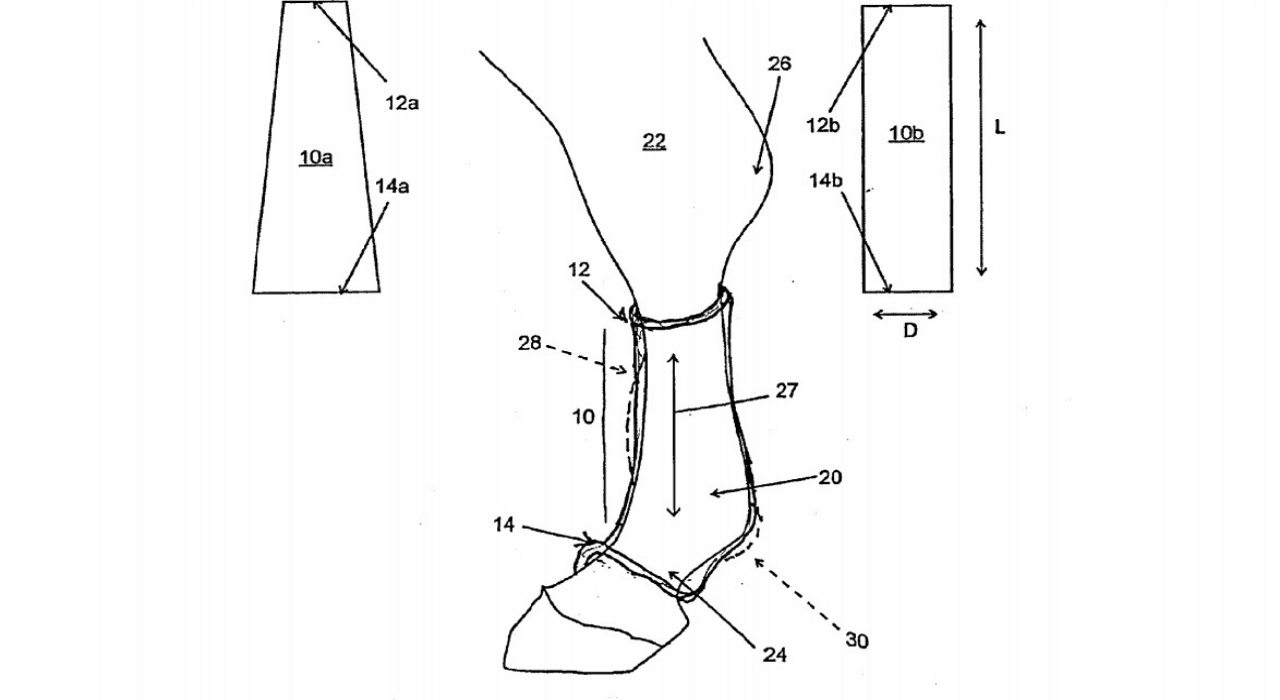
On June 9, 2020, the Patent Trial and Appeal Board (“Board”) reversed the Examiner’s obviousness rejections in Ex parte Leibold. The obviousness rejections were based on the Examiner’s combination of two references: Petterson and Witzel. However, the Board found that it would not have been obvious to modify Petterson based on the teaching of Witzel, because such a modification would render Petterson inoperative for its intended purpose.
Claim 1 is representative. It recites (in part):
1. An animal joint support for a horse’s leg, comprising: an elastic sleeve including:
a top end around a top opening; a bottom end around a bottom opening; and
a central portion connecting the top end and the bottom end;
wherein the bottom end includes a reduced elastic strength region around the bottom opening, the reduced elastic strength region having a lower elastic strength than the central portion…
Appeal No. 2019-002576, at 2 (P.T.A.B. June 9, 2020) (non-precedential) (emphasis added).
The inventor found that such a joint support allows for compression to be provided to support the injured leg of a horse, while not constricting bloodflow that aids in healing the injury. Specifically, the joint support provides relatively more compression on ligaments in the fetlock portion of the leg, while providing relatively less compression on a vascular area at the front of the pastern joint.
In rejecting the claims as obvious, the Examiner relied on Petterson for a compressive horse sock. The Examiner acknowledged that Petterson does not disclose or suggest the claimed feature of a bottom end having reduced elastic strength. However, the Examiner alleged that it would have been obvious to modify the horse sock of Petterson to include this feature, based on Witzel.
The Board disagreed with the Examiner. Instead, the Board agreed with the Appellant that the Examiner’s proposed modification would render Petterson’s horse sock inoperable for its intended purpose. Part of that purpose is to have Petterson’s sock bunch loosely around the horse’s leg, insulating and warming the foreleg without compromising circulation. To achieve this purpose, the lower cuff of Petterson’s horse sock must be sufficiently elastic to hold the sock in place, i.e., to prevent the loosely bunched portion of the sock from sliding down. However, if the cuff were made to be less elastic than the bunched portion above the cuff, then the sock could not achieve this purpose. That is, the cuff could not adequately hold the sock in place, and the sock would slide down.
Since the Examiner’s proposed modification would render Petterson’s horse sock inoperative for its intended purpose, the Board found that the modification would not have been obvious. Accordingly, the Board reversed the Examiner’s rejections.
Takeaway: Many (if not most) obviousness rejections include combinations of references, with the Examiner modifying a primary reference based on the teachings of one or more secondary references. Faced with such a rejection, it is important to consider exactly what the modification would look like in practice. Often, it can be helpful to discuss this with the inventor(s) or other technical personnel of the applicant organization, as they are in a good position to opine on whether the Examiner’s proposed modification would render the prior art inoperative for its intended purpose.
Judges: M. Hoelter, B. Martin, L. Stepina
by Matthew Barnet
Matthew E. Barnet, Ph.D., is a patent attorney and partner at Element IP. His practice focuses on patent procurement and client counseling, including expertise in validity and infringement opinions.
